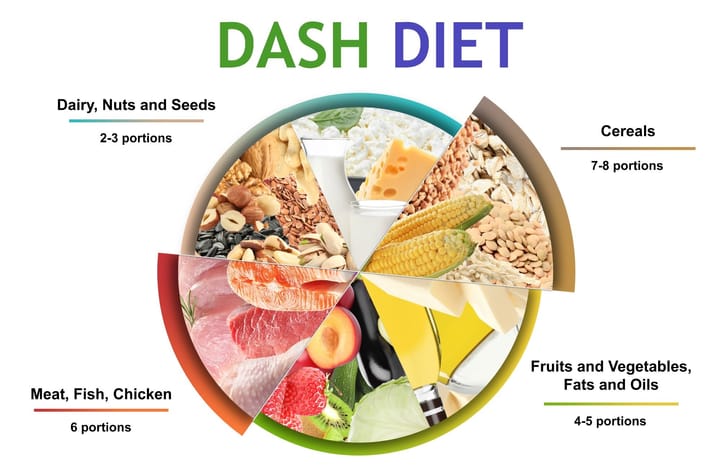Fatty Liver Disease and Heart Health - A Hidden Connection You Need to Know

We often hear about the dangers of high cholesterol, high blood pressure, and diabetes for our heart health. But there's a silent contributor lurking in the shadows, quietly wreaking havoc on our cardiovascular system: fatty liver disease.
Fatty liver disease, a condition where fat accumulates in the liver, is often considered a silent disease, especially in its early stages. However, its implications extend far beyond the liver itself, weaving a tangled web of interconnected health risks, with heart health bearing a significant brunt.
The Silent Progression: From Fatty Liver to Heart Disease
The journey from fatty liver disease to heart disease is a complex interplay of metabolic disturbances and inflammatory processes. Let's break down the steps:
1. Insulin Resistance and Diabetes:
As fat builds up in the liver, it disrupts the liver's normal function, including its role in regulating blood sugar. This leads to insulin resistance, a condition where the body's cells become less responsive to insulin, the hormone responsible for transporting glucose from the bloodstream into cells for energy. As a result, blood sugar levels rise, increasing the risk of developing type 2 diabetes.
According to the American Diabetes Association, approximately 9.4% of the US population has diabetes, with type 2 diabetes accounting for about 90-95% of cases. Studies suggest that non-alcoholic fatty liver disease (NAFLD) is present in 55% to 74% of individuals with type 2 diabetes.
2. Dyslipidemia and Hypertension:
Fatty liver disease also throws a wrench in lipid metabolism, leading to an unhealthy blood lipid profile, known as dyslipidemia. This includes elevated levels of triglycerides, a type of fat found in the blood, and low-density lipoprotein (LDL) cholesterol, often dubbed the "bad" cholesterol. Simultaneously, it can lower high-density lipoprotein (HDL) cholesterol, the "good" cholesterol that helps remove LDL cholesterol from the arteries.
The prevalence of dyslipidemia in NAFLD patients is estimated to be as high as 70%. Moreover, fatty liver disease is associated with increased activity of the renin-angiotensin-aldosterone system, a hormonal system that regulates blood pressure. This overactivity can lead to hypertension, commonly known as high blood pressure.
3. Atherosclerosis and Cardiovascular Events:
This combination of diabetes, dyslipidemia, and hypertension sets the stage for atherosclerosis, a condition where plaque builds up inside the arteries, narrowing and hardening them. Over time, this plaque buildup restricts blood flow, increasing the risk of heart attacks, strokes, and other cardiovascular events.
The Framingham Heart Study, a landmark study that has been following the health of participants and their offspring since 1948, identified NAFLD as an independent risk factor for cardiovascular disease, even after adjusting for other traditional risk factors.
Beyond the Heart: A Multi-Organ Threat
The reach of fatty liver disease extends beyond the cardiovascular system, impacting other organs and increasing the risk of various health complications:
- Gallbladder Disease: Fatty liver disease can impair bile production and flow, increasing the risk of gallstones.
- Kidney Disease: The metabolic stress and inflammation associated with fatty liver disease can also burden the kidneys, potentially leading to chronic kidney disease.
- Cognitive Impairment: Emerging evidence suggests a link between fatty liver disease and cognitive decline, possibly due to inflammation and reduced blood flow to the brain.
Breaking the Chains: Addressing Fatty Liver Disease for a Healthier Heart
The good news is that fatty liver disease is often reversible, especially in its early stages. Lifestyle modifications play a pivotal role in managing and reversing fatty liver disease, ultimately protecting your heart health:
- Weight Management: Even a modest weight loss of 7-10% of body weight can significantly reduce liver fat, improve insulin sensitivity, and lower cardiovascular risk.
- Healthy Diet: Focus on a balanced diet rich in fruits, vegetables, whole grains, and lean protein sources. Limit saturated and trans fats, added sugars, and processed foods.
- Regular Exercise: Aim for at least 150 minutes of moderate-intensity aerobic activity or 75 minutes of vigorous-intensity aerobic activity per week, along with muscle-strengthening activities at least twice a week.
- Alcohol Moderation: Excessive alcohol consumption is a major contributor to fatty liver disease. If you drink alcohol, do so in moderation.
Taking Charge of Your Health
Fatty liver disease, often a silent threat, poses a significant risk to our heart health and overall well-being. By understanding its far-reaching impact and adopting a proactive approach to prevention and management, we can break the chains of this disease and pave the way for a healthier, more vibrant life. If you have any concerns about fatty liver disease or your risk factors, consult your healthcare provider for personalized guidance and support.
















Comments ()